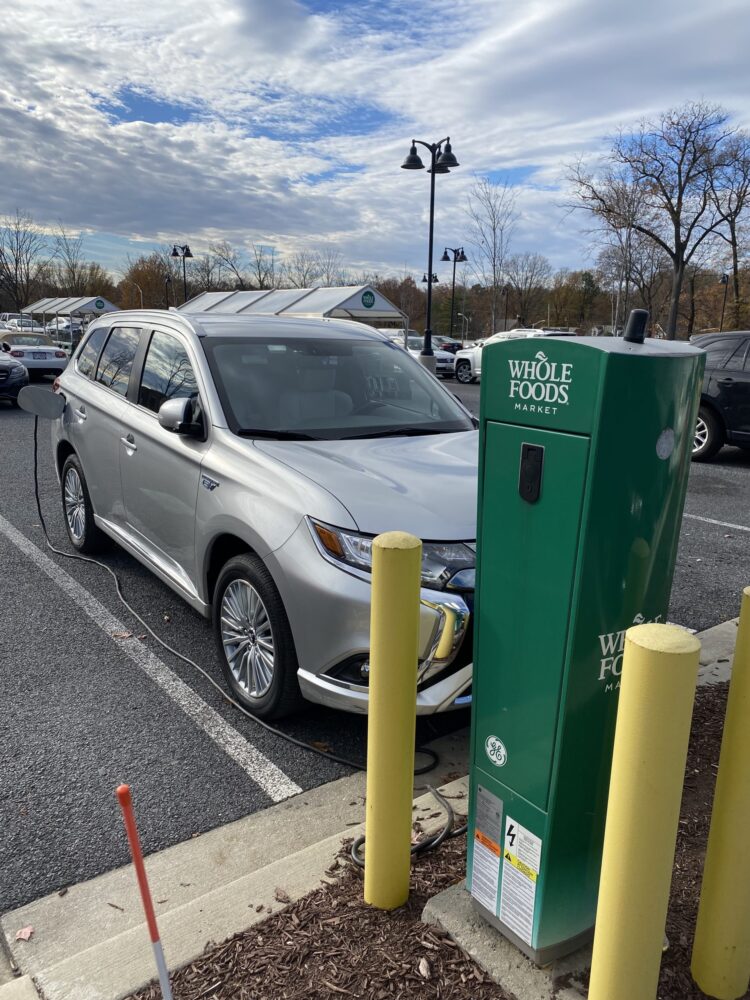WASHINGTON – The future of the American automobile industry is electric, President Joe Biden said in an August executive order, pledging to make half of all new cars and trucks sold in 2030 zero-emission vehicles.
Biden on Wednesday put the purchasing clout of the federal government behind his push for electric vehicles, signing a new executive order to convert the 645,000-vehicle federal fleet to zero-emission cars and trucks by 2035. The latest move is part of a series of steps Biden ordered to reduce the federal government’s carbon footprint.
“The actions and investment required to achieve these goals will protect the environment, drive innovation, spur private sector investment, improve public infrastructure, and create new economic opportunity,” Biden said in the order.
But weaning the nation off of gas-fueled vehicles might be easier said than done, although Maryland is doing better than most states.
Compared to Europe’s electric vehicle sales compound annual growth rate of 60% from 2016 to 2020, as well as China’s 36% growth rate, the United States is lagging behind at just 17%, according to Pew Research Center.
Among the 50 states and the District of Columbia, Maryland ranks seventh in being prepared for electric vehicles, according to Zutobi, an international online driver education firm. The metric measures the number of registered electric vehicles in each state, the percentage of all registered vehicles that are electric and the number of public chargers, based on a scale of 1 to 10.
Of the 10.2 million electric vehicles on roads around the world, China accounts for 44% of them, Europe 31% and the United States just 17%, according to the Pew study.
Maryland had 40,587 registered electric vehicles as of the end of November, Deputy Secretary of the Maryland Department of Transportation R. Earl Lewis Jr. told Capital News Service in an interview.
Lewis, who chairs the Maryland Zero Emission Electric Vehicle Infrastructure Council, also noted that Maryland has over 1,000 electric vehicle charging stations in the state.
“One of the challenges is the concern about range anxiety – that vehicles will be charged, there won’t be enough charging stations, and people can get stranded,” Ben Grumbles, the Maryland secretary of the environment, told CNS. “So working with companies and agencies like the Maryland Department of Transportation to significantly expand more corridors for infrastructure charging is very important.”
The $1.2 trillion bipartisan infrastructure bill, which Biden signed into law in November, includes $63 million for the expansion of Maryland’s electric vehicle charging network over five years.
“It was one of the most important components when the debate was playing out in Congress,” Ben Grumbles told CNS. Maryland Gov. Larry Hogan, a Republican, “was leading the charge with governors and members of Congress on a bipartisan basis saying this infrastructure bill is about cleaner transportation and cleaner energy.”
Consumers considering the purchase of electric vehicles could get additional encouragement if Biden’s $2.2 trillion “Build Back Better” package of social spending and climate initiatives gets through Congress. That’s because one provision included in the bill is a tax credit for the purchase of an electric vehicle.
The package also includes billions of dollars to convert the federal vehicle fleet and United States Postal Service vehicles to electric power.
The bill narrowly passed the House last month but faces an uncertain future in the Senate.
On the state level, funding for charging stations has come from a number of sources, including from a vehicle manufacturer.
Volkswagen, which sold diesel-powered vehicles equipped with illegal “defeat devices” that emitted ten to forty times above the NOx standard from 2009 to 2015, was required to give settlement funds to states impacted by its actions. According to the Maryland Department of the Environment, about 16,357 of these illegal vehicles were sold in Maryland, making the state eligible to receive nearly $76 million.
“When the state got funding through the Volkswagen cheating scandal several years ago, we could allocate up to 15% of our entire settlement to electric vehicle charging,” Grumbles said. “And we’ve done exactly that. That translates into over $11 million for electric vehicle charging stations.”
Maryland is also taking additional steps toward getting zero-emission vehicles on the road, including a public education campaign about the potential benefits of electric cars.
“This is a choice that will make sense for them for a lot of different reasons,” Lewis said. “Some people know it has a better environmental profile and others want to make the choice because they want to save dollars and operating costs.”
Lewis pointed to high fuel prices for gas-powered cars as a primary potential cost reduction when purchasing an electric car.
On a national level, Maryland has made it a priority to partner with other states to meet a net-zero goal of vehicle emissions.
Maryland joined a task force with California, Connecticut, Massachusetts, New York, Oregon, Rhode Island and Vermont, in which the states “agree to coordinate actions to support and ensure the successful implementation of our Zero-Emission Vehicle programs,” according to a memo from the group.
Another element of the electric car wave is a shift in production, Carole Delion, Division Chief of Connected & Automated Transportation Systems in the State Highway Administration, told CNS.
“The push toward electric batteries is wild,” Delion said. “So many companies are moving forward with them.”
Lewis also pointed to the fact that electric cars require far fewer parts to manufacture compared to gas-powered vehicles, making the production of more electric cars a reasonable initiative.
“We have very aggressive goals (in Maryland),” Grumbles said about a zero-emission future. “And we’re glad that the federal government now has very aggressive goals. If all the stars align, it is achievable. But it’s going to take a lot of work.”

